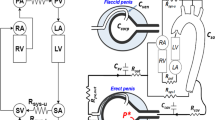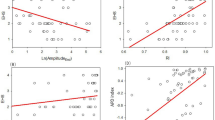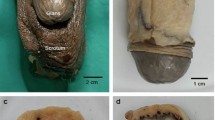Abstract
A co-ordinated series of vascular events underlie the generation of a penile erection. The control and regulation of this simple event is, in fact, a complex of interactions occurring at multiple levels. Many of these individual pathways and responses have been studied extensively. The understanding of the necessity for the integration between the individual pathways into a complex of series and parallel coupled mechanisms provides a rationale for the development of a framework of multiple and overlapping systems. This paper sets out some of the principles of integrated and balanced control of vasodilation and vasoconstriction in the penis. In addition, the role of growth induction and regression and the importance of time as a factor in studying penile structure and function is discussed.
This is a preview of subscription content, access via your institution
Access options
Subscribe to this journal
Receive 8 print issues and online access
$259.00 per year
only $32.38 per issue
Buy this article
- Purchase on Springer Link
- Instant access to full article PDF
Prices may be subject to local taxes which are calculated during checkout
Similar content being viewed by others
Author information
Authors and Affiliations
Rights and permissions
About this article
Cite this article
Adams, M., Banting, J., Maurice, D. et al. Vascular control mechanisms in penile erection: phylogeny and the inevitability of multiple and overlapping systems. Int J Impot Res 9, 85–91 (1997). https://doi.org/10.1038/sj.ijir.3900275
Issue Date:
DOI: https://doi.org/10.1038/sj.ijir.3900275
Keywords
This article is cited by
-
Androgen depletion in humans leads to cavernous tissue reorganization and upregulation of Sirt1–eNOS axis
AGE (2013)
-
Androgens are Fundamental in the Maintenance of Male Sexual Health
Current Urology Reports (2011)
-
Development of a rat model of sexual performance anxiety: effect of behavioural and pharmacological hyperadrenergic stimulation on APO-induced erections
International Journal of Impotence Research (2002)



